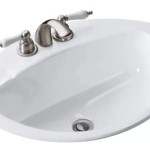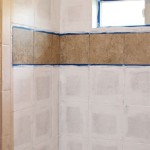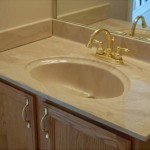```html
How to Repaint a Bathroom Vanity: A Comprehensive Guide
Repainting a bathroom vanity is a cost-effective and relatively straightforward way to refresh the look of a bathroom without undergoing a complete renovation. A fresh coat of paint can transform a dated or worn vanity into a stylish centerpiece, complementing the existing décor or establishing a new aesthetic. This article provides a detailed guide on how to repaint a bathroom vanity, covering essential preparation, painting techniques, and necessary aftercare to achieve a professional-looking result.
Key Point 1: Preparing the Vanity for Painting
Proper preparation is crucial for achieving a smooth, durable, and aesthetically pleasing finish. Skimping on this stage can lead to paint adhesion problems, visible imperfections, and a less-than-satisfactory final product. Therefore, meticulous attention to detail during the preparation phase is essential.
1. Removal and Disassembly: The first step involves removing the vanity doors, drawers, and all hardware, including knobs, pulls, hinges, and any attached decorative elements. This allows for easier access to all surfaces and prevents paint from getting on unwanted areas. Label each door and drawer with its corresponding location on the vanity cabinet. This will greatly simplify reassembly later. Store all hardware in a safe place to avoid loss or damage.
2. Cleaning: Thoroughly clean the vanity to remove any grime, soap scum, mildew, or other contaminants. Use a mixture of warm water and a degreasing cleaner, such as trisodium phosphate (TSP) or a TSP alternative. Apply the cleaner with a sponge or cloth, scrubbing gently to loosen any stubborn residue. Rinse thoroughly with clean water and allow the vanity to dry completely. For mold or mildew, use a bleach solution (following safety precautions, including ventilation and protective gear) before washing with the degreaser. Allow the vanity to dry completely before proceeding.
3. Repairing Damages: Inspect the vanity for any dents, scratches, or chips. Fill any imperfections with wood filler or auto body filler, depending on the material of the vanity. Apply the filler according to the manufacturer's instructions, ensuring that it is level with the surrounding surface. Allow the filler to dry completely before sanding. For larger repairs, multiple applications of filler may be necessary. Consider consulting a professional for extensive damage.
4. Sanding: Sanding creates a textured surface that provides better adhesion for the primer and paint. Use medium-grit sandpaper (around 120-150 grit) to scuff the entire surface of the vanity. Pay particular attention to areas that are already smooth or glossy, as these surfaces tend to resist paint adhesion. After the initial sanding, switch to a finer-grit sandpaper (around 220 grit) to smooth out any rough spots and create a more refined surface. Vacuum up the sanding dust and wipe down the vanity with a tack cloth to remove any remaining residue. Remember to wear a dust mask during sanding to prevent inhalation of fine particles.
5. Priming: Applying a primer is essential for several reasons. Primer seals the surface of the vanity, prevents stains from bleeding through the paint, and provides a uniform base for the topcoat. Choose a high-quality primer that is specifically designed for the type of material the vanity is made of. For example, an oil-based primer is often recommended for wood vanities, while a bonding primer may be necessary for laminate or melamine surfaces. Apply the primer in thin, even coats, using a brush, roller, or spray gun. Allow the primer to dry completely according to the manufacturer's instructions. Lightly sand the primed surface with fine-grit sandpaper (around 320 grit) to remove any imperfections before applying the paint.
Key Point 2: Applying the Paint
Selecting the right paint and applying it correctly are crucial for achieving a professional-looking and durable finish. The choice of paint depends on several factors, including the vanity's material, the desired sheen, and the overall style of the bathroom.
1. Paint Selection: Choose a high-quality paint that is specifically formulated for use on cabinets or furniture. Alkyd (oil-based) paints and acrylic latex paints are both suitable options. Alkyd paints provide a durable, smooth finish, but they require more time to dry and can be more difficult to clean up. Acrylic latex paints are water-based, making them easier to clean up and more environmentally friendly. They also dry faster than alkyd paints. Consider using a paint with a satin or semi-gloss sheen, as these sheens are more durable and easier to clean than matte finishes. For bathrooms with high humidity, a paint that contains mildew inhibitors is recommended.
2. Application Methods: Paint can be applied using a brush, roller, or spray gun. Each method has its advantages and disadvantages. Brushing is the most traditional method and is suitable for small vanities or intricate details. Rollers provide a smoother, more even finish than brushes, but they may not be suitable for tight corners or detailed areas. Spray guns offer the most professional-looking finish, but they require more skill and experience to operate properly. Regardless of the method chosen, apply the paint in thin, even coats. Avoid applying too much paint at once, as this can lead to drips, runs, and an uneven finish.
3. Brushing Techniques: When brushing, use a high-quality brush with synthetic bristles. Dip the brush into the paint, removing any excess paint by tapping it against the side of the can. Apply the paint in long, smooth strokes, following the direction of the wood grain. Overlap each stroke slightly to avoid leaving any gaps. After applying the paint, "tip off" the surface by lightly dragging the brush across the wet paint to remove any brush marks. Allow the paint to dry completely before applying the next coat.
4. Rolling Techniques: When rolling, use a high-density foam roller designed for smooth surfaces. Load the roller with paint, ensuring that it is evenly distributed. Apply the paint in overlapping strokes, maintaining a consistent pressure. Avoid pressing too hard, as this can create roller marks. After applying the paint, "tip off" the surface by lightly dragging the roller across the wet paint to smooth out any imperfections. Allow the paint to dry completely before applying the next coat.
5. Spraying Techniques: When spraying, use a high-quality spray gun designed for fine finishing. Thin the paint according to the manufacturer's instructions. Adjust the spray gun to achieve a consistent spray pattern. Apply the paint in thin, even coats, overlapping each coat slightly. Maintain a consistent distance from the surface to avoid drips and runs. Allow the paint to dry completely before applying the next coat. Ensure proper ventilation and wear a respirator when spraying paint.
6. Number of Coats: Typically, two coats of paint are required to achieve full coverage and a durable finish. Allow each coat to dry completely before applying the next coat. Lightly sand the surface with fine-grit sandpaper (around 320 grit) between coats to remove any imperfections and create a smoother surface. Vacuum up the sanding dust and wipe down the vanity with a tack cloth before applying the next coat.
Key Point 3: Reassembly and Aftercare
Once the paint has completely dried, the vanity can be reassembled. Proper reassembly and ongoing aftercare are essential for maintaining the appearance and durability of the newly painted vanity.
1. Hardware Installation: Reinstall all hardware, including knobs, pulls, hinges, and decorative elements. Use the labels from the disassembly phase to ensure that each door and drawer is reinstalled in its correct location. Tighten all screws and bolts securely. If any of the hardware is damaged or worn, consider replacing it with new hardware. Adding new hardware can significantly enhance the overall look of the vanity.
2. Curing Time: Allow the paint to fully cure before subjecting the vanity to heavy use. Curing time varies depending on the type of paint used, but it is generally recommended to wait at least 24-72 hours before placing items on the vanity or using the sink. During the curing process, avoid exposing the vanity to excessive moisture or humidity.
3. Cleaning and Maintenance: Clean the vanity regularly with a mild soap and water solution. Avoid using harsh chemicals or abrasive cleaners, as these can damage the painted finish. Wipe up any spills or splashes immediately to prevent staining. Consider using a soft cloth or sponge to clean the vanity, as abrasive materials can scratch the paint. Regularly inspect the vanity for any signs of damage, such as chips, scratches, or water damage. Repair any damage promptly to prevent it from worsening.
4. Protecting the Finish: Consider applying a clear coat of polyurethane or varnish to protect the painted finish. This will provide an extra layer of protection against scratches, stains, and water damage. Choose a clear coat that is specifically designed for use on cabinets or furniture. Apply the clear coat in thin, even coats, following the manufacturer's instructions. Allow the clear coat to dry completely before using the vanity. Regular waxing can also help to protect the painted finish and maintain its luster.
By following these detailed steps, one can successfully repaint a bathroom vanity and achieve a professional-looking, durable, and aesthetically pleasing result. Careful preparation, proper painting techniques, and diligent aftercare are all essential for transforming a dated or worn vanity into a stylish and functional element of the bathroom.
```
How To Paint Bathroom Cabinets Without Sanding 8 Vital Steps Grace In My Space

How To Paint Bathroom Vanity Cabinets Tutorial Benjamin Moore

How To Paint A Bathroom Vanity Love Remodeled

How To Paint A Bathroom Vanity Secrets For Perfect Finish

How To Quickly Paint A Bathroom Vanity Cabinet Entri Ways
.jpg?strip=all)
Painting A Bathroom Vanity Again Dream Green Diy

How To Paint Cabinets Last Painting A Bathroom Vanity Maison De Pax

Diy Bathroom Vanity Makeover With Behr Grey Paint

How To Paint A Bathroom Vanity Angela Marie Made

Home How To Repaint A Bathroom Cabinet Cabinets Diy Painting
Related Posts







